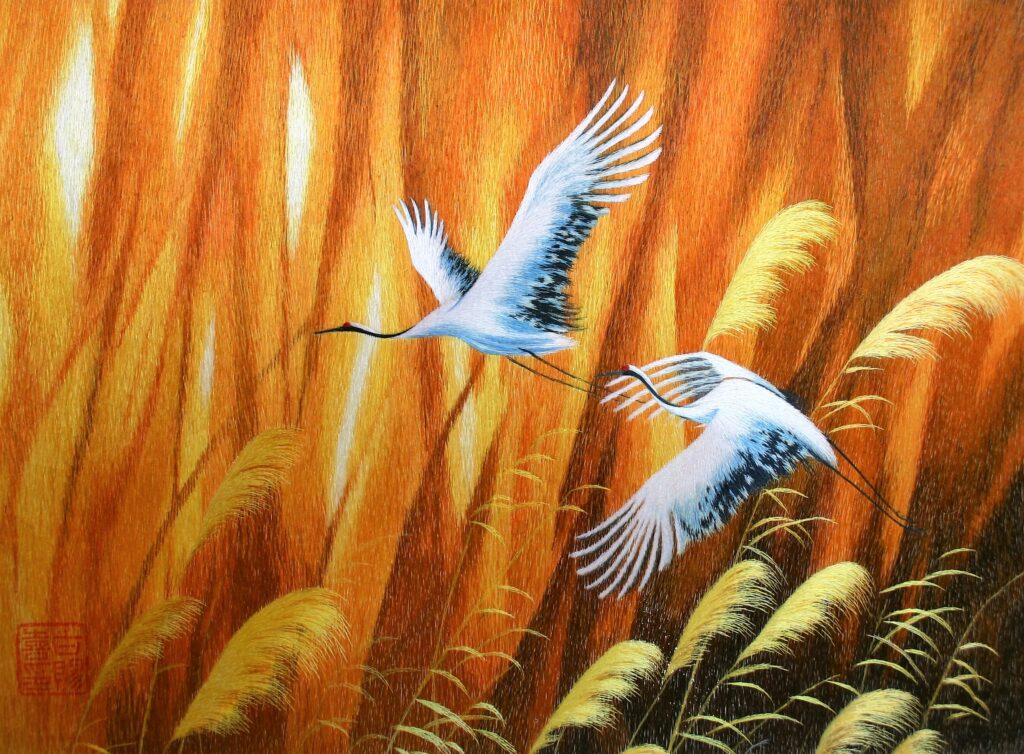Categories
Traditional Chinese Art Embroidery

Chinese embroidery has a rich and colourful history with evidence of silk dating the early Shang Dynasty (1500 – 1050 BC). Its development can be traced through the different historical periods and dynasties of China, each of which left its mark and added to its evolvement.
The term ‘Chinese Embroidery’ broadly refers to embroidery styles and techniques practised in China. The variety is vast and today, four main styles have emerged as the pre-eminent styles in Chinese embroidery:
- ‘Su’ embroidery from Suzhou
• ‘Shu’ embroidery Sichuan
• ‘Xiang’ embroidery from Hunan and;
• ‘Yue’ embroidery from Guangzhou area.
While there are significant overlaps in techniques employed, these four styles are distinctly recognisable. Their development has been greatly influenced by local geographic environment, traditions and customs as well as other artistic features of the area. In history, ‘Su’ embroidery was noted as the choice of embroidery for the royal wardrobe and wall decoration for the imperial household.
‘Su’ style of embroidery is the style favoured by Margaret. It is well known for its elegance and delicate needlework techniques; and is the epitome of ‘painting with silk thread’.
Come and discover the intricate skill of painting with silk threads and bring your designs to live. Visit the Embroidery Style to view stitched curriculum pieces and other creative works.
For those who are interested in acquiring practical skills in Chinese embroidery, please view the Curriculum and Class dates.
